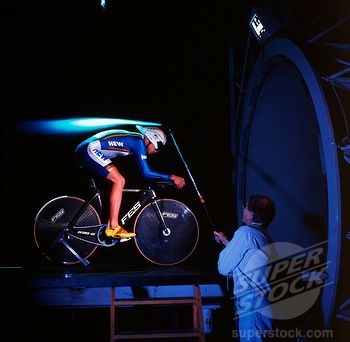
In spirit of the 2012 Summer Olympic Games in London, TQ will be bringing you a look at how technology is influencing sport at its highest level.
The 2012 London Olympic Games have started with the epic Opening Ceremonies and now the real action is set to start. England has been preparing to host their third games to over 10,000 athletes from 204 nations since it won the bid in 2005. With the XXX Summer Games underway there is poised to be many memorable events and surprises.
Cycling has been in the Olympics since the very first games in Greece in 1896, but unlike many of the events the programme, the sport of Cycling has changed constantly. The men’s road race was the first cycling event in 1896, the tandem track event started in London in the 1908 Olympics, the women’s road race was introduced in 1984, women’s track cycling started in the 1988 Games, mountain biking in 1996, and BMX in 2008.
Over the years many cyclists have been interested in reducing their times and becoming more aerodynamic. In the late 19th century there was not much cyclists could do to reduce their times due to the limited technology. So, they would go to high altitudes due to the thin air, which reduced wind resistance, to train. As the decades rolled by there was little change in the technology in cycling until the 1970’s when wind tunnels changed the sport forever.
Teams analyse drag and the airflow of the cyclist’s baseline position while they are in the wind tunnel that in turn helps in the cyclist’s training. The wind tunnel measures three things; drag, body position, and airflow.
Drag is measured by allowing air flow to reach speeds as fast at 45 kilometers per hour against the cyclist in the tunnel. The information gathered is put onto a screen and the cyclist and their team can determine what is creating the drag and how to reduce it. Body position also plays a key and a light is projected on a cyclist’s side and a white board shows the shadow of the rider’s body position. So, the changes in body positions is traced and the cyclist and their team can see the rider’s body and the changes he or she makes and critic it. Airflow is calculated using tuft wand, which is a rod with thread being attached to different parts of a cyclist’s body to determine if the airflow is moving over the rider’s body in smooth layers or if the wind is turbulent. Cyclists may use certain helmets, cycling suits, and body position to reduce turbulent winds and allow airflow to go over the body smoothly.
There is one limitation with this technology and that is the air flow blows straight into the cyclist rather than rotating around the air tunnel. If the air flow can rotate in the tunnel this could result in more realistic training for road cyclists who have to deal with constant wind changes. Even though the air tunnel may help improve a cyclist while they are training there are still different factors that can help reduce a cyclist’s time. Some of these factors are the type of helmet they use, their body position, their hand position on the bicycle handles, or the type of suit they are wearing while cycling.
Great Britain cyclists and triathletes have using the air tunnel Mercedes-AMG-Petronas has created in Northamptonshire in preparation of the 2012 Olympic Games. This air tunnel was built in 1996 and was converted in 2007 to help train cyclists. Great Britain has been off to a slow start with no cyclist in the top twenty-five for the men’s road race at the XXX Games, but only time will tell if the host nation can collect meddles in any of the other cycling events.